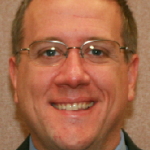As the second in a three-part series, this article explains how telehealth can help improve efficiency, facilitate team-based care, and allow you to provide gold-standard treatment for all sleep disorders.
The telehealth boom is upon us. And because sleep medicine professionals generally employ non-invasive assessment, diagnostic, and treatment modalities, the field is particularly well positioned to leverage the benefits. Indeed, proper application of telehealth strategies has the potential to both improve healthcare outcomes and reduce costs.
Yet the first step to incorporating telehealth into your organization has nothing to do with technology. It has everything to do with clarifying your strategic vision, and then identifying areas where technology might support this vision.
In this article, the second of a three-part series, we’ll advance the discussion to consider three essential strategic objectives for sleep health organizations and how telehealth approaches can support them. This list is not exhaustive, but a sampling of three common issues I see in my work as a trusted advisor. (Read Part 1: “Promises and Pitfalls of Telehealth”| Read Part 3: “7 Easy Steps to Adding Telehealth to Your Sleep Practice“)
STRATEGIC OBJECTIVE 1: IMPROVE EFFICIENCY
The two driving forces of 21st-century medicine will be improving patient-centered care and reducing costs. In light of the well-documented shortage of trained sleep specialists, it is incumbent on sleep medicine providers and the field at large to maximize accessibility to sleep specialists. One important way to do this is to increase provider efficiency.
Opportunities for Telehealth:
1. Improved office flow. When patients complete registration and intake questionnaires before arriving at the office, your paperwork burden is reduced, office efficiency is increased, and patients generally leave more satisfied with their experience.
2. Standardized patient education. Any busy sleep medicine physician knows the biggest “time wasters” are a) explaining sleep apnea upwards of 20 times per day, and b) dictation. By using multimedia technologies, providers can ensure patients receive the right education at the right time, based on their specific complaints.
3. Automated report generation. Much patient history can be obtained through electronic means, which can then be automatically formatted into a preliminary dictation/report. This report can be seamlessly integrated into the electronic health records (EHR) or uploaded manually.
What to Look For:
1. Fully customizable intake questionnaires and point-and-click report formatting.
2. High-quality, evidence-based multimedia and interactive patient education.
3. Adherence tracking.
4. Integration with EHR.
5. Back-end data aggregation and queryable database.
STRATEGIC OBJECTIVE 2: FACILITATE TEAM-BASED CARE
Telehealth can improve the quality of sleep medicine care and maximize resource utilization within the larger healthcare system. For example, imagine a hospital system with only one bona fide sleep disorders center but multiple satellite primary care clinics. By employing a shared platform for screening, assessment, education, and triage, best practices can be effectively disseminated system-wide. Primary care providers inclined to treat sleep complaints can access specialist guidance when needed, and those patients who do require specialist care will arrive more carefully selected and prepared for the process.
Telehealth approaches also can improve team-based care within the sleep center itself, for example, by proactively managing PAP adherence or guiding mid-level provider activity.
Opportunities for Telehealth:
1. Customization. Specific screening, assessment, and triage functions at both satellite and sleep center levels.
2. Improved information dissemination. Secure communication and document sharing between satellite and sleep center.
What to Look For:
1. Secure messaging between providers.
2. Easy and intuitive color coding, for example for “red alert” patients.
STRATEGIC OBJECTIVE 3: PROVIDE GOLD-STANDARD TREATMENT FOR ALL SLEEP DISORDERS
One of the biggest challenges facing sleep medicine is how to effectively disseminate evidence-based best practices. No disorder better exemplifies this challenge than chronic insomnia. Cognitive-behavioral treatments for insomnia are recommended by the National Institutes of Health, the AASM, and other leading organizations as first-line treatment for insomnia. Yet, in part due to a gross shortage of certified behavioral sleep providers, this powerful, cost-effective therapy for the most common sleep disorder in the US populace remains woefully underused.
Opportunities for Telehealth:
1. Cognitive behavioral therapy (CBT) access. Recommend “self-help” Internet-based CBT for insomnia.
2. Interactive programs. Oversee provider-directed, interactive Internet-based CBT for insomnia.
3. Real-time therapy. Implement telemedicine with live provision of CBT services.
What to Look For:
1. Ongoing monitoring of patient and access to provider.
2. Integration with your organizational clinical flow, including existing technologies and EHR (if desired).
THE FUTURE IS NOW: WHAT TO DO NEXT
Several years ago, a good friend in the western United States told me he wasn’t concerned about the impact of home sleep testing (HST). He said Massachusetts was an anomaly, and there was no reason to believe HST use would spread. When we spoke several weeks ago, he confided that he virtually cannot obtain authorization for an in-lab sleep study, and the primary care providers in his area have aggressively pursued HST.
I didn’t have the heart to say, I told you so.
Telehealth is on the rise, and sleep medicine will prove to be fertile soil for the coming telehealth boom. In the final part of this series, we’ll take a closer look at real-time telemedicine, what it might mean for our field, and how you can leverage it to your advantage.
What’s the difference between telehealth and telemedicine? Wickwire explains.





